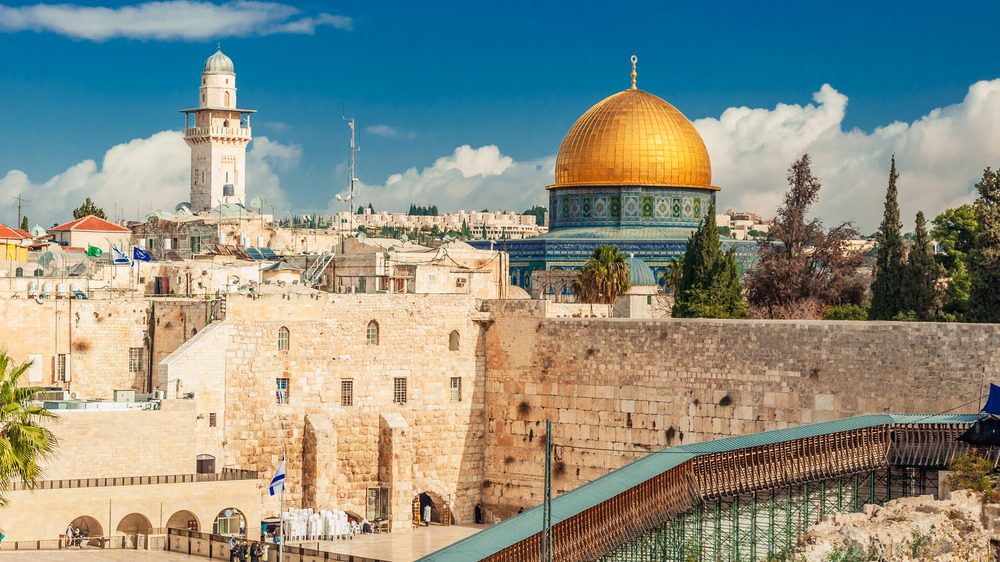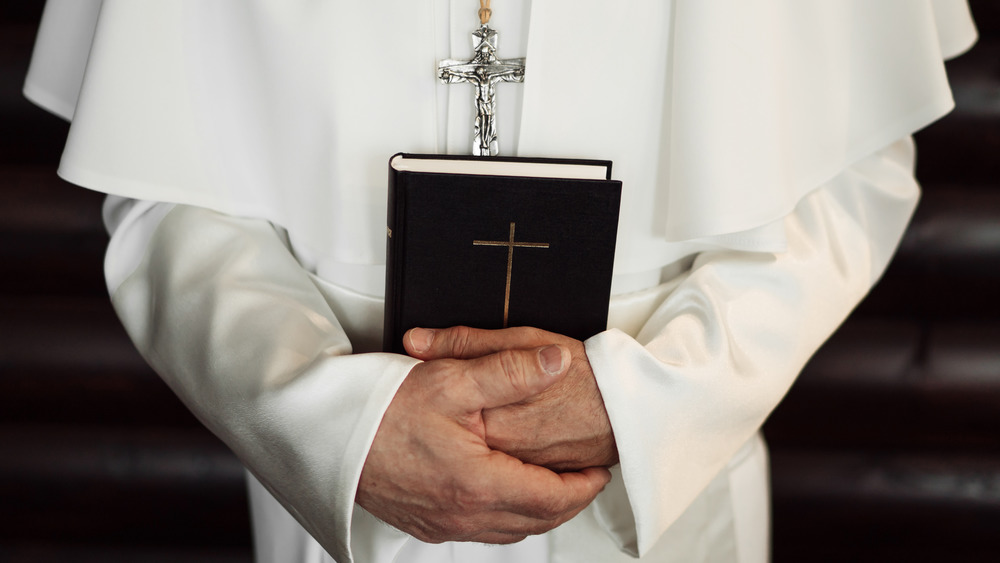This Is What Really Caused The Crusades
For those who are old enough to have lived through the year 2000's "Y2K" scare, you might remember all the doomsaying about the supposed design error that would have made computer systems unable to tell the difference between the year 1900 and 2000. At the stroke of midnight, January 1, 2000, as the world entered the new millennium, planes were supposed to drop from the sky mid-flight, nuclear facilities would melt down left and right, the entire internet could spontaneously blink offline, and world banking systems were to collapse. Of course, none of those things happened, but as Global News tells us, Peter de Jager's original, simple advice about being careful about a potential bug ballooned into a $600 billion global effort to thwart an apocalypse that never happened.
But don't think that it's only we modern, tech-savvy humans that are obsessed with our own ultimate demise. The human predilection to conflate fear with reality has led not only to Y2K, but belief in the prophecies of Nostradamus, terror regarding the 2012 end of the Mayan calendar, and failed Ragnarific events that never happened, as Live Science outlines. Many of them have centered around the belief in the now-2000-year-old "imminent" Second Coming of Jesus Christ, and how it leads to the so-called end of days in the Biblical book of Revelations. It's this particular brand of apocalypse fever, in fact, that we can thank for launching one of history's most bloody set of holy wars, the Crusades.
A deathly preoccupation with time
Apocalypse fever – whether Y2K or Y1K – derives from the same source: how we calculate time. This is fitting considering the inception of the Crusades because we literally measure time as extending forward and backward from the supposed birth of Jesus ("BC" meaning "before Christ," and "AD" meaning "anno domini," or, "in the year of the lord"). However, this way of measuring time has only existed since 525 CE ("CE," or common era, has come into use as a secular replacement for "AD"), as Live Science writes, when a monk named Dionysius Exiguus of Scythia Minor renamed the years based on Jesus, not Roman emperors.
It took centuries for our modern way of measuring time to take hold. "BC" was added after "AD," kind of like counting negative numbers, and it wasn't until the 9th century and Emperor Charlemagne that the system was officially adopted. In 1582, Pope Gregory XIII updated the old Roman way of calculating solar years to our current Gregorian method, as History reports. And, it wasn't until as recent as 1988 that the International Organization for Standardization (ISO), a non-governmental body in Geneva, established universal criteria for denoting time, worldwide, in their document ISO 8601.
So Y1K panic? Well, it wasn't limited to only 999. It existed more or less perpetually, as The New York Times says, like a sword of Damocles hanging over anyone unfortunate enough to live in a year ending in "99."
Wishing for an apocalypse on Jesus' 1,000-year deathiversary
That being said, the number 1,000 is a significant number in Christian theology. As How Stuff Works points out, there are those who believe that Jesus will return before a millennium of promised peace (premillennialists) and rule over it, king-like. Then, there are those who believe that Jesus will come back only after a perfect church on Earth has been in existence for a millennium (postmillennialists). And naturally, for as long as this story has existed, there have been those who hope for this era to come, perhaps as an easy fix for human woes and earthly troubles. And more dangerously, there are those who've desired to hasten its occurrence or believe that there's a blueprint for history to follow.
Approaching 999 CE, then, European peasants not only had plenty of experience awaiting the apocalypse, but the turn of the millennium marked the final century to pass before the 1,000-year anniversary of Jesus' death in 33 CE. As Britannica says, western Europe had been on the decline since the Roman era. The greatest acts of humanity seemed in the past, and the dismal state of civilization seemed to confirm its need for heavenly rescue. A burning purge of Earth and its "wicked" was an event to anticipate, not merely fear.
This was precisely the promise offered by Pope Urban II in 1095 CE when he called for a crusade during the Council of Clermont, per Ancient History.
Cut off from Jerusalem during an economic uptick
Starting in 980 CE, as SF Gate tells us, Europe had actually been experiencing something of a mini-boom in commerce and trade, in contrast to preceding decades' penury. This economic uptick would fuel the apocalyptic preoccupations of the era, especially from a bourgeoning middle class that feared losing its wealth, a wealth that itself would help fund the Crusades. As the Archbishop of Wulfstan put it, "This world is in haste, and is drawing ever closer to its end, and it always happens that the longer it lasts, the worse it becomes. And so it must ever be."
It's important to note that since the days of Charlemagne in the early 800s, as Britannica states, Christians had enjoyed access to Jerusalem for the purposes of pilgrimages. At that time, Charlemagne, a militaristic leader and historically idealized king, had been protector of the Christian settlement in Jerusalem. He had also, perhaps in part to the militaristic nature of the "good vs. evil" showdown in Revelations, come to be associated with the Second Coming of Christ, particularly because Jerusalem is one of the main settings in Revelations, per PBS.
Come the mid-11th century, however, Christian access to Jerusalem was threatened because Seljuk Turks were expanding through the Middle East, and political and military strife made passage to the holy city difficult. Into this gap stepped Pope Urban II, playing on the consciousness of a public primed to hasten an apocalypse that hadn't yet happened.
Pope Urban II's call for the people to march
Pope Urban II's call for the Crusades played on public consciousness, yes, but for him it was a very practical way to reinforce the power of the Church, particularly the papacy, as well as repel Islamic influence. As History says, Byzantine Emperor Alexius I requested Urban's help with the encroaching Turks, as he was afraid they were going to move beyond Antioch and into Constantinople. The timing worked perfectly for Urban, as did all other factors: economic, political, social, and religious. Also significant was the not-too-hidden death wish nesting inside the hearts of Europeans waiting for Jesus, who idolized the memory of their legendary warrior-king Charlemagne and his connection to Jerusalem, epicenter for the apocalypse.
And so, in 1095 Urban called on the support of all classes at the Council at Clermont. In the end, 60,000-100,000 people rallied to the war banner, largely poor French and German peasants, but also included the aforementioned middle class and led by a handful of nobles. Dubbed the "People's Crusade," per History, this untrained horde made it through Constantinople, Nicaea, and Antioch. Eventually reduced to a mere 1,200 cavalry and 12,000 foot soldiers, this final remnant pushed on to Jerusalem, sieged it, and in 1099, won.
Ironically, Pope Urban II died before news of the victory reached him. There would be seven crusades total, as Britannica states, between then and 1291. As historian Andrew Holt outlines, estimates range from 1 to 9 million dead during the entire period.




